Over-Nite Sensation (Super Deluxe Edition) – Frank Zappa
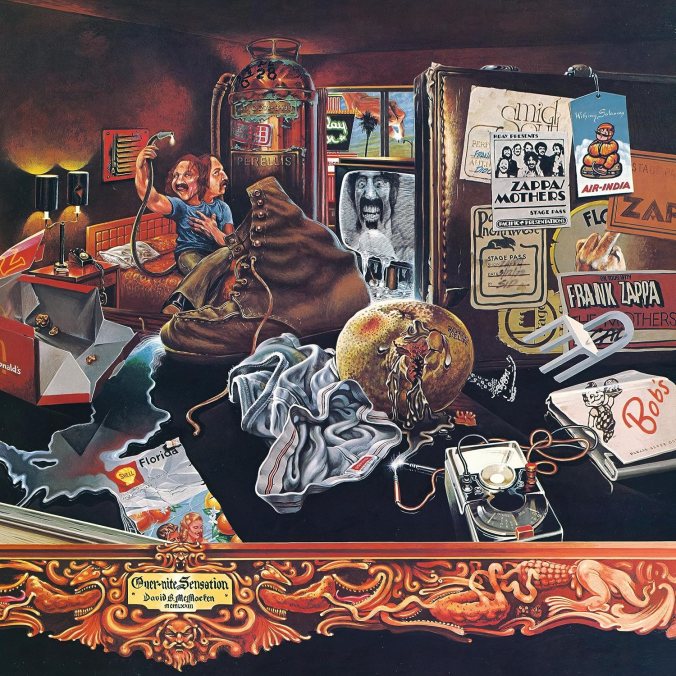
Introduction…
I am sure those who followed Frank Zappa when he was alive and kicking would recall how it was an expensive game trying to keep up with the vast output of albums he could churn out in a year. If you have everything that was part and parcel of his discography you would have spent more than a small fortune. Since his death back in 1994 the Zappa Family Trust has released no less than a further 63 posthumous official releases of albums and boxsets and it will cost you a lot more than a small fortune trying to keep up with them these days than when he was alive.
I have to confess that this latest boxset is not done in the way I was expecting it to be released especially having purchased the Waka/Wazoo boxset last year and as that set paired both the albums Waka/Jawaka and The Grand Wazoo together I was expecting Over-Nite Sensation to be paired with Apostrophe (‘). However, that is not the case and the fact that I paid even more money for this release makes this boxset look even more like a rip-off than the previous one.
My main interest in any release like this is the Multichannel content on the Blu-ray, though I have to confess that I was very surprised at how good the content that came with the 4 CD’s in the Waka/Wazoo boxset, it sort of made up for its extortionate price tag and that was 25% cheaper than this new release.
The Over-Nite Sensation boxset follows more or less the same suit in that it comes with 4 CD’s and a Blu-ray, it also comes presented with a cheap way of doing things that quite frankly SUCKS! especially for its extortionate and elaborate price point. To find out more of why I think its presentation sucks and things have been done on the cheap, read my review of the Waka/Wazoo boxset on the following link where I go into great detail about it. https://leespeaksoutaboutmusic.wordpress.com/2023/03/31/lee-speaks-about-music222/
I noticed they are calling this particular boxset a Super Deluxe edition although that might very well apply to its price tag and once again the word RIP-OFF! springs to mind. The big question is, will the CD’s that come in this boxset make up for its even more expensive price point? Before I answer that question and dive into its contents, let’s take a look at how it arrives.
Packaging & Artwork…
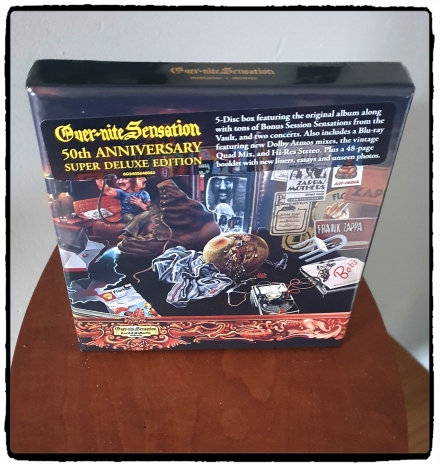
As you can see like all these Zappa boxsets put out by the Zappa Trust they have gone once again with a Clamshell Box which is perhaps more associated with cheaper CD boxsets and not the sort of packaging that one would associate with the price point of this thing. To give you an example this is more like what you should get for the type of money you are spending here and this Elton John Boxset cost less, the look of disappointment tells it all and one might have to be a Madman to even think about spending their money on this release.

As I mentioned before the presentation totally SUCKS! and no doubt the Zappa Trust is making a killing out of these boxsets with the extortionate price they are charging for them. They are quite frankly taking the piss and no way on this earth should a boxset like this cost any more than £40. Frank’s music is worthy of a better presentation in my opinion and not done on the cheap like this.
Likewise, as with the previous box set, the box itself comes with five discs which are stored in single cardboard sleeves. Also included is a 46-page booklet that comes with the usual liner credits and lyrics plus some useful informative information with a 10-page essay written by Mark Smotroff who is a freelance music writer and was a lifelong Zappa fan. You also get a bit more informative content with a couple of pages written by vaultmeister Joe Travis.
I purchased my copy from the Zappa store for £74.27 as Amazon UK wanted way too much money for it and the cheapest place in the UK was the Burning Shed which would have worked out slightly over £80 with the postage and packaging. I took advantage of PayPal’s interest-free Pay in 3 months scheme and I must admit I was even thinking of cancelling it down to its expensive price tag. One of the main reasons it is more expensive here in the UK is down to import tax and shipping costs from the States if you lived there you could have picked it up for around $66 which is around £52, it never used to be like that years ago and I could easily picked it up for around that price or even cheaper. Even now it’s still £96 on Amazon UK.
Artwork.
The artwork for the original album cover was done by Dave McMacken who was instructed by Frank to depict life on the road with the band, scattered around the cheesy hotel room you will see many references to being on tour such as the two roadies, backstage passes, concert flyers, it also includes references to some of the album tracks. With its cartoonist look it does put me in mind of Cal Schenkel’s work who did the illustrations on the inside of the gatefold sleeve with the use of photographs of the band taken by Emerson-Loew.
It’s a very impressive album cover and was glad to see they used the original artwork for the box and even went to the trouble of printing the inside of the gatefold on the inside of the box. The illustrations and design for the rest of the boxset such as the booklet and disc sleeves were done by Michael Mesker.
New Release Editions.
Besides the box set to coincide with the 50th Anniversary of the album they more or less did the same thing as they did with the Waka/Wazoo boxset last year and no new remastered standalone CD was made available, no digital download of the 4 CD’s that come in the box set was made available either. However, the boxset has been made available to stream on streaming services including Amazon.
As they did with the previous boxset the only other physical format that got to celebrate its 50th Anniversary was put out for vinyl lovers and this time around it worked out even more expensive in that both the black and coloured vinyl was pressed onto 180gram 45rpm LP’s. The Unlimited black vinyl is the cheapest option and comes on 2 X 45rpm LP’s and can still easily be obtained on Amazon for around £54.

The Deluxe Limited Clear Splatter vinyl is the most expensive option and comes with 2 X 45rpm LP’s and an LP cut at 33-1/3 containing 35 minutes of bonus material from the Blu-Ray boxset. All albums were cut by Chris Bellman at Bernie Grundman Mastering in 2023 from the original analogue master tapes. The Zappa store is perhaps the cheapest way to obtain it and is priced at around $80 (US) although outside the US one could easily expect to pay over £100 for it.
Over-Nite Sensation Boxset In Review…
The Over-Nite Sensation Boxset by Frank Zappa was supposedly officially released on the 3rd of November 2023. However, due to how the Zappa store handled the distribution, I very much doubt that anybody received their copy by then. From what I can gather it would have been around the 17th of November that copies started to circulate and not even Discogs can pinpoint the actual day it was released that month. My copy eventually arrived on the 28th and at one point I was wondering if it would arrive in time for Christmas 😁😁😁.
So far everything I’ve said about this boxset (apart from the artwork) points to the negative side of things mostly reflecting on its extortionate price point and its presentation. These are the exact thoughts I had when I received the Waka/Wazoo boxset a year ago and for the life of me, I am still trying to fathom out why they charged 25% more for this release especially has it only focuses on one album and not two as that boxset did. It certainly presents a tougher challenge to redeem itself as that previous boxset did so let’s now dive into its contents and see exactly what you get for the buck and see if there is any justification for laying out the extra bucks for it.
The Package Contents In Review.

The boxset comes with 4 CD’s and a Blu-ray the latter of which is very much the thing that entices me to buy a product like this in the first place, although I have to confess it was the KILLER! content on the CD’s in the Waka/Wazoo boxset that made it worth the money in the end. The one thing I will say about these boxsets is that they cover the time period these albums were released very well with the extra content you get and I guess that’s why they decided to only focus on the one year and not include Apostrophe (‘) that was released in the following year.
They have done things a bit differently with this boxset in that they have included the album on one of the CD’s and not just on the Blu-ray as they did with the Waka/Wazoo boxset. It’s perhaps just as well because there are people who buy these things that do not have a Blu-Ray player or a surround setup and it can be a very expensive game for those who don’t have one. To be perfectly honest if this boxset contained 5 or 6 CD’s (only) and they were charging this price for it I would have not looked twice at it and shown no interest at all in purchasing it, they are using the multichannel content to bump the price up and this is where they have you by the balls.
So let’s now dive into the package starting with the CD’s and see if there is any KILLER! content with this release, and most of all to see if it’s worth shelling out this sort of money for a boxset like this.
CD 1. (The Album/Bonus Session Masters/Bonus Vault Sensations).
 The first disc comes with 16 tracks sped over an overall playing time of 73 minutes and 36 seconds. The first 7 tracks contain the album Over-Nite Sensation and although on the Blu-ray they are calling it the 2023 version it has not been newly remastered. This is actually the remastered and mastered version that was done by Bob Ludwig back in 2012, he also used the original master tapes to bring the album back to its 1973 sonic glory and is of excellent sound quality.
The first disc comes with 16 tracks sped over an overall playing time of 73 minutes and 36 seconds. The first 7 tracks contain the album Over-Nite Sensation and although on the Blu-ray they are calling it the 2023 version it has not been newly remastered. This is actually the remastered and mastered version that was done by Bob Ludwig back in 2012, he also used the original master tapes to bring the album back to its 1973 sonic glory and is of excellent sound quality.
The next 6 tracks are associated with the Bonus Session Masters and basically, these are alternative mixes and edits and a total of 23 minutes and 9 seconds has been allocated for this section. The good thing here is that these are not just alternative mixes and edits of the tracks from the album and only two tracks “I’m The Slime” and “Montana” made the album and as they are single edits they are perhaps the least interesting out of the bunch. The first is 30 seconds shorter, the latter does include a short intro that was originally edited out of the final mix and edits out Frank’s guitar solo making it 68 seconds shorter.
The other four tracks are previously unreleased but not unknown by any means and appeared on later albums such as “Wonderful Wino” which originally started its life as an instrumental piece written by the band’s former member Jeff Simmonds and featured on his 1969 debut solo album Lucille Has Messed My Mind Up of which Frank produced and wrote the album’s self-titled track. A year later Frank wrote some lyrics reshaped the piece and performed it live with the Mothers.
The first live version was with Flo & Eddie handling vocal duties, which can be heard on the double live album Playground Psychotics released in 1992. The version we have here is with Ricky Lancelotti on vocals and although an edited version was released on the compilation album The Lost Episodes in 1996 here you get the complete edit which is 28 seconds longer. Frank also reshaped the song to include his own vocals for the 1976 album Zoot Allures.
“Inca Roads” eventually found its way on the 1975 album One Size Fits All with George Duke taking on lead vocal duties. The version you get here is completely different and although an instrumental version of this 1973 version appeared on The Lost Episodes this one includes Sal Marquez on vocal duties and I have to say it is quite DELICIOUS! It was a surprise turn-up in the vault and warranted a new 2023 mix.
The 1973 version of “RDNZL” also appeared on The Lost Episodes and the difference with this version is that it includes Frank’s guitar solo which was edited out of the release. It was also later completely rearranged and wound up on the 1978 album Studio Tan. The final piece (not in order) making up this section “For The Young Sophisticate” eventually found its way onto the 1996 posthumous release Lather. It was an album that Frank intended to release in a 4 LP box set back in 1977 though it never officially appeared. In that year during its production, he applied some Dolby EQ to it and that is the only difference between the take of this song.
The final 3 tracks on the disc are also previously unreleased and what they are calling Bonus Vault Sensations and here you get a further 15 minutes and 47 seconds to whet your appetite with, although we are perhaps going over familiar ground as the first couple of tracks are merely different takes of “Inca Roads” and “RDNZL“. The first is an early instrumental version of a 2-track master to which 3/4 of it is an alternative take that Frank decided to ditch for the master version. The second of them is the second take his a slightly different take. “X-Forts (Echidna’s Arf (of You))” winds the disc up and although I know live versions appeared from 1974 onwards I am not aware of any studio version like the one we have here.
Overall I would not say there was anything KILLER! amongst the bonus material on the first disc. However, it does provide a bit more variety in relation to the material that made up the album, it’s also very well recorded and sounds GREAT! My personal highlights are “Inca Roads (1973 Version, 2023 Mix)“, “RDNZL (1973 Mix)” and “X-Forts (Echidna’s Arf (of You)).
CD 2. (Bonus Vault Sensations Continued/Hollywood Palladium Live).
 The second disc comes with a total of 13 tracks sped over an overall playing time of 76 minutes and 4 seconds, all tracks are previously unreleased. The first 10 tracks take up 47 minutes and 35 seconds are devoted to the continuation of the Bonus Vault Sensations all of which are various outtakes, alternative mixes, rehearsals etc. of the original tracks that made up the album, many of which are repeated twice. The only track from the 7 tracks that is not present here is “Zomby Woof“.
The second disc comes with a total of 13 tracks sped over an overall playing time of 76 minutes and 4 seconds, all tracks are previously unreleased. The first 10 tracks take up 47 minutes and 35 seconds are devoted to the continuation of the Bonus Vault Sensations all of which are various outtakes, alternative mixes, rehearsals etc. of the original tracks that made up the album, many of which are repeated twice. The only track from the 7 tracks that is not present here is “Zomby Woof“.
A couple of tracks that are not repeated are “Camarillo Brillo” and “Montana” the first of which is an alternative mix where some reverb has been applied to Franks’s vocals and is nothing special to write home about. The second is what they are calling a take-home mix which has more notable differences in particular with the intro and the missing backing vocals from the Ikettes. The instrumentation also has a different arrangement and has more of a laid-back feel about it, it’s also 47 seconds longer.
You get two versions of “I’m The Slime” (as with the rest of the tracks in this section) the first of them is an early demo that was recorded at Paramount Studios in December 1972 with no documentation of the musicians who played on it. It was most likely recorded with the previous band lineup with Tony Duran on rhythm guitar and Dave Parlato on bass although they are unsure who the drummer is. The second version is a basic outtake with a slightly different slant and is much longer.
The first of the two versions of “Dirty Love” is a studio session rehearsal where they are getting to grips with the song in sections with stops and starts, you also hear Frank injecting his input into the takes. The second version is with Frank having fun with the new quadrophonic setup in Paramount Studios and playing his guitar in Quad. The solo is much longer due to the fun he was having.
Likewise the first of the two versions of “Fifty-Fifty” is of George Duke improvising the pipe organ intro whilst the second is completely instrumental and perhaps the more interesting out of the two and features Jean-Luc Ponty playing the lead vocal line on his violin. Ponty also features heavily in the first of the two versions of “Dinah-Moe Humm” which is a short studio session rehearsal, the second version is a take-home mix and once again the more interesting one out of the two as it’s a couple of minutes longer than the version that made the album mostly due to Frank’s speaking part in which he adds more words to it.
The final three tracks on this disc take up 28 minutes, 23 seconds and are the first part of the Hollywood Palladium Live section that continues on the third disc. Unfortunately, the whole show that Frank played at the Hollywood Palladium in California on the 23rd of March 1973 is incomplete as a couple of the reels of the tape were missing, the first of them perhaps the most important as it misses out on the first 5 songs of the show “RDNZL“, “Exercise #4“, “Dog Breath“, “Uncle Meat (Medley)” and “Fifty-Fifty“. The final reel was also missing which missed out on the guest appearance by former band and vocalist member Ray Collins.
The show starts about a third of the way through the set with “Montana” and Frank had assembled a slightly new band lineup after the Grand Wazoo tours most notably with the backline with Tom Fowler on bass and Ralph Humphrey on drums. Both Ian & Ruth Underwood had also returned and the addition of Jean-Luc Ponty on violin also made a substantial change.
The one thing you always get at a Zappa concert is plenty of variety and next up we have “Dupree’s Paradise” which is an instrumental piece that never found its way onto any of Frank’s studio albums and was often played at many of his shows around this period back in the 70’s. It is actually one continuous piece here they have split it into 2 tracks using the first of them as an intro although at over 8 minutes in length, one could hardly call it an intro and the whole piece is nearly 21 minutes long.
Overall, the second disc is perhaps the weakest out of the bunch that comes in this package and the continuation of the so-called Bonus Vault Sensations is where the weakness lies. It’s hardly the bonus content that one will play that much and once again there is no real KILLER! content in this section. The live material from the Hollywood concert at the end of the disc is the real winner on this disc and it has a great live sound that makes you feel you were at the concert itself.
CD 3. (Hollywood Palladium Live Continued).
 The third disc contains the rest of the live at Hollywood Palladium concert that took place on the 23rd of March 1973 and comes with 9 tracks (previously unreleased) sped over and an overall playing time of 70 minutes and 15 seconds. The concert was originally recorded by engineer Barry Keene on ½ inch analogue tape and the re-mix, audio restoration and mastering were done by John Polito of Audio Mechanics in 2023. Putting back together many of Frank’s live recordings of concerts can be quite tedious because he never saw any future for them and would often splice the odd track here and there from the master tapes to make up a compilation album later on in his career.
The third disc contains the rest of the live at Hollywood Palladium concert that took place on the 23rd of March 1973 and comes with 9 tracks (previously unreleased) sped over and an overall playing time of 70 minutes and 15 seconds. The concert was originally recorded by engineer Barry Keene on ½ inch analogue tape and the re-mix, audio restoration and mastering were done by John Polito of Audio Mechanics in 2023. Putting back together many of Frank’s live recordings of concerts can be quite tedious because he never saw any future for them and would often splice the odd track here and there from the master tapes to make up a compilation album later on in his career.
The Hollywood Palladium first opened its doors at the end of October 1940, it was built where Paramount Studios originally resided on 6215 Sunset Boulevard in the Hollywood neighbourhood of Los Angeles California, USA. The Art Deco-style ballroom theatre was designed by renowned Los Angeles architect Gordon B. Kaufman and built by film producer Maurice M. Cohen.

The building can hold up to 4,000 people and on its opening night on the 31st of October 1940 Tommy Dorsey and his orchestra played the venue along with a just-starting-out Frank Sinatra as the band vocalist. As decades moved on rock acts such as Led Zeppelin, Jimmi Hendrix, Alice In Chains and many more got to play at the venue. Over the years the theatre has been renovated and has kept its shape and the more notable thing about it these days is perhaps its surroundings.

The show continues with “Cosmik Debris” a song that would appear a year later on the Apostrophe (‘) album and was played live at many of Frank’s shows. Although the next track is titled “The Dynamic Sal Marquez!” it’s not really a track and is merely an introduction to welcoming Marquez to the stage to play the next number that he originally played on “Big Swifty” and here he is a guest. Still present with the lineup is George Duke and the band does a well-amicable job of knocking this one out of the ballpark over the next twelve and three-quarter minutes.
Likewise “…The Successor To Willie The Pimp” is not a track and an introduction to “I’m The Slime” that is titled here as “The Curse Of The Zomboids (I’m The Slime)“. Once again the band are cooking on gas and this is a great live number of the song and cooks a lot longer too with Frank’s guitar solo.
No time to stop for introductions for the next instrumental piece entitled “Don’t You Ever Wash That Thing?” which is another piece that only ever appeared at live shows. It’s also the longest piece in the setlist and over the next 23 minutes and 26 seconds, the band is on fire. It’s a piece that allows all the band members to strut their stuff with individual solos. Ralph Humphrey’s drum solo at the end takes us into the next track entitled “FZ & The Percussion Section” which once again features Humphrey along with Ruth Underwood and from here on it’s non-stop all the way.
The show finishes off with a couple of jams entitled “Palladium Jam (Parts 1 & 2)” and you could say that the last four tracks that take up 41 minutes and 39 seconds of the show are one continuous piece of music that allows each band member to show their ability. Most of the material in this lengthy section is new and improvised and for these final two jams the vocalist Ricky Lancelottie enters the frame to provide some scat vocals more prominently in the second part which is more rocked up with Frank’s guitar, it was the only time he ever performed live with Frank.
Overall, even though the show is incomplete the third disc is perhaps the GEM! out of the four CD’s you get in this boxset and no doubt this lineup of Frank Zappa (Guitar), George Duke (Keyboards), Jean-Luc Ponty (Violin), Tom Fowler (Bass), Ralph Humphrey (Drums), Ian Underwood (Woodwinds & Synth), Bruce Fowler (Trombone), Ruth Underwood (Percussion) and guests Sal Marquez (Trumpets) and Ricky Lancelottie (Vocals) was at its peak.
CD 4. Cobo Hall Live.
 The fourth CD contains another live concert that Frank played a couple of months later at the Cobo Hall in Detroit, Michigan on the 12th of May 1973. It also features the same band lineup (minus Ricky Lancelottie) and is supposedly complete. Sound engineer Steve Desper was at the helm of recording the live show and once again the audio was restored and mastered by John Polito at Audio Mechanics in 2023. The disc itself comes with a total of 16 tracks spread over an overall playing time of 72 minutes and 52 seconds and like the previous show some of the tracks are merely introductions.
The fourth CD contains another live concert that Frank played a couple of months later at the Cobo Hall in Detroit, Michigan on the 12th of May 1973. It also features the same band lineup (minus Ricky Lancelottie) and is supposedly complete. Sound engineer Steve Desper was at the helm of recording the live show and once again the audio was restored and mastered by John Polito at Audio Mechanics in 2023. The disc itself comes with a total of 16 tracks spread over an overall playing time of 72 minutes and 52 seconds and like the previous show some of the tracks are merely introductions.

The Cobro Hall or Arena was built in Downtown Detroit in 1960 with a seating capacity for 12,000 people and served as the home court of the Detroit Pistons of the National Basketball Association from 1961 to 1978. It also hosted rock concerts and many bands played at the venue including the likes of Led Zeppelin, Alice Cooper, Queen, Kiss, The Who and much more. The building closed in 2010 and by 2015 was demolished. Hunting Place now resides where it once stood as you can see below.

During this run of the North American tour and the Detroit shows in particular, the Mahavishnu Orchestra and blues guitarist John Hammond were the support acts at these shows which is why the show was shorter. The reason I mentioned that what you get here is “Supposedly” the full concert is because both “Zomby Woof” and “Montana” were also on the setlist of the night in question of this particular concert. However, it also mentioned in the booklet that the venue may have put a curfew on the time limit due to the number of acts playing that night which is why both of these songs were not played that night.
The first 6 minutes of the show are of Frank introducing all the band members individually and checking that the instruments’ levels are alright before proceeding with the show. I quite like this introduction and it gives you the feeling of being there. Although there are quite a few numbers (or even tracks on the disc) Frank does not waste that much time talking about them and rolls out one after the other as if they were one continuous piece of music.
The opening five numbers that are rolled out over the next 15 minutes are a prime example although it’s fair to say that four of them “Exercise #4“, “Dog Breath“, “The Dog Breath Variations” and “Uncle Meat” were compositions from the Uncle Meat album. However here they have been very cleverly combined with the newer piece “Fifty-Fifty” as if it were all one big orchestral piece of music, the latter of them is also longer and takes up almost half of the time that has been allocated for all the tracks and allows all the musicians to have a say in the solo department so to speak.
Like many of Frank’s shows, it is the other musicians who tend to shine the most and the work that both Ian & Ruth Underwood put into the opening number of the set is nothing short of sheer BRILIANCE! It is one of Frank’s more beautiful compositions and it displays the wonderful talent of the musicians he had around him.
The jazzy number “Inca Roads” is up next and this live version features Sal Marquez doing his Frank Sinatra impression with the vocal side of things. It’s perhaps not quite as delicious as the studio “Inca Roads (1973 Version, 2023 Mix)“ on the first disc but nevertheless, the band are most certainly on fire with this performance.
Frank then introduces a three-part extravaganza that takes up 8 tracks counting the two short introductions and the 27 minutes, 22 seconds you get here of “Don’t Eat The Yellow Snow“, “Nanook Rubs It“, “St. Alfonzo’s Pancake Breakfast“, “Father O’Blivion“, “St. Alfonzo’s Pancake Breakfast (Reprise)” and “Cosmik Debris” are basically the tracks that would eventually make up the first side of the 1974 album Apostrophe (‘). It’s perhaps the silliest part of the show in particular with the lyrical content which Frank puts across like a story however the musicianship is top-notch.
The show is not quite over and after a lengthy applause Frank and the Mothers return for a final encore and turn their attention back to the Uncle Meat album and knock out a medley of “King Kong/Chunga’s Revenge/Son Of Mr. Green Genes“.
Overall, I would consider this live concert to be another of the GEMS! among the CD’s that come on this package. The good thing about Frank’s live shows is that he always changed the setlist giving you much more variety from one show to the next, we’re not just talking about a couple of numbers either like most bands would do and he does do things differently to keep things fresh.
Blu Ray.
 The Blu-Ray features the album Over-Nite Sensation only and does not come with any bonus tracks. It does however offer you the choice of multiple audio formats to choose from including three surround mixes and a couple of hi-res stereo mixes. Although it does not include any bonus tracks one of the things that I personally considered to be a bonus is that it includes Frank’s original Quadrophonic mix, as a matter of fact, it was the very thing that stopped me from cancelling my pre-order.
The Blu-Ray features the album Over-Nite Sensation only and does not come with any bonus tracks. It does however offer you the choice of multiple audio formats to choose from including three surround mixes and a couple of hi-res stereo mixes. Although it does not include any bonus tracks one of the things that I personally considered to be a bonus is that it includes Frank’s original Quadrophonic mix, as a matter of fact, it was the very thing that stopped me from cancelling my pre-order.

I have to admit that the Blu-Rays main menu does not look that impressive, especially in relation to how they did the menu for the blu ray that came with the Waka/Wazoo boxset. However, one could say there is more to the picture here when you start to play the album so to speak. Its navigation is simple and presents you with three choices to choose from “Play”, “Tracks” and “Audio”.

The good thing about the navigation is that it does not have to load to another screen making it faster to get around and as you can see in the menu above when you click on “Tracks” a box pops up so you can choose any of the tracks from the album you wish to play. You can also see that there are only 7 album tracks and no additional bonus material was included on the disc.

The “Audio” section is where you choose your desired audio format and by default, it is set to PCM Stereo 96/24 indicated by the red lightning flash markers as seen in the menu above. It also includes a higher sample rate stereo audio track of 192/24. The surround mixes offer you the choice of Dolby Atmos 48/24, a 96/24 True HD 5.1 mix and Frank’s vintage Quadrophonic mix which also has a sample rate of 96/24 and they have gone to town here with the hi-res formats.
As you can see from my example video there is more to the picture regarding the menu when you play the album and it scans and pans around Dave McMacken’s impressive artwork and some nice animation has been applied to it as well. The encoding and authoring were done by Meedja Limited and the menus were done by Richard Quin, overall a very impressive job has been done here.
Stereo & Surround Mixes.
As already touched upon the stereo mixes were remastered and mastered by Bob Ludwig back in 2012 and the added bonus on the Blu-ray is that they come with a couple of hi-res versions with a sample rate of 96K & 192K. It is always the surround mixes that rock my boat and the Dolby Atmos and 5.1 mixes once again were done by the same engineers Erich Gobel & Karma Auger who did the surround mixes for the Waka/Jaka and Grand Wazoo albums that came with the Waka/Wazoo boxset. The good thing about these new surround mixes is that they have no mastering issues like we saw with the previous boxset.
Also included is Frank’s original Quad mix which was engineered and remixed by Kerry McNabb back in 1973. I do enjoy quad mixes and was well chuffed it was included on the Blu-ray. I also think that some of the older engineers had more of an idea of how to present the music over 4 channels however when making comparisons between the new Atmos and 5.1 mixes I do prefer the way Gobel & Auger placed the instrumentation in the mix. The Atmos mix is actually my preferred choice and merits easily 10 out of 10 whilst I would give 8 out of 10 for the Quad mix.
Over-Nite Sensation Boxset Credits…
Boxset Production by Ahmet Zappa & Joe Travers. 1973 original recordings produced, composed, arranged and conducted by Frank Zappa. Album Remastered & Mastered by Bob Ludwig 2012. 1973 Live recordings engineered by Barry Keene & Steve Desper. Dolby Atmos & 5.1 Surround Mixed by Erich Gobel & Karma Auger. Mastered by John Polito. Blu Ray Menu Design, Encoding & Authoring by Meedja Limited. Art Direction & Design by Michael Mesker. Photography by Sam Emerson, Jeffrey Mayer & Melanie Starks. Essay by Mark Smotroff. Liner Notes by Joe Travers.
The Album In Review…
Over-Nite Sensation by Frank Zappa and Mothers Of Invention is the 9th studio album to be released with his band name and the 13th Studio album if you were to also count the studio albums released under his own name at this time. It was released on the 7th of September 1973 and came with 7 tracks that spread over an overall playing time of just over 34 minutes and 37 seconds. Despite the mixed reviews the album sold very well and reached number 32 on America’s Billboard charts, by 1976 the album was certified Gold due to the number of its sales.
It was the first album to be released on his own new record label DiscReet Records which he set up with his then-business partner/manager Herb Cohen, the name was derived from the disc and Compatible Discrete 4 (CD-4) which was the process of encoding quadraphonic sound signals into phonograph records developed by JVC & RCA in 1971 and introduced in 1972. It was also the first of three Zappa albums to be released in Quadrophonic in the 70’s.
The album was recorded between the 19th of March to the 1st of June 1973 and two studios were utilised for the recording. The first of which was Bolic Sound that was a recording complex in Inglewood, California that was originally set up by musician Ike Turner in 1970 and was in operation up until it got burnt down by an arson attack in January 1981. Tina Turner & The Ikettes also contributed backing vocals to some of the album tracks it’s also believed that they were paid a lot more for their services and paid by the hour instead of per song according to Wikipedia.
Many artists recorded at the studios including the likes of Paul McCartney, George Harrison, Duane Allman, The Rolling Stones, Three Dog Night, Little Richard, Billy Preston, The Turtles, Natalie Cole, Chaka Khan and many more.
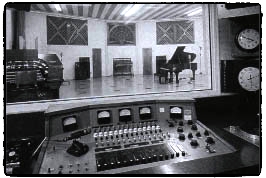 Whitney Studios in Glendale California was the second studio to be utilised for the recording which was set up in 1957 by the organist Lorin J. Whitney. The studio was large enough to accommodate a 60-piece orchestra and one of the studio’s first major customers was Walt Disney Productions. Besides the likes of Aretha Franklyn, Pat Benatar and Barry White and his 40-piece orchestra it was also utilised for actors to do voiceovers. It was sold to MCA in 1978 and was widely used by many more popular artists such as Blondie, Tim Buckley, John Coltrane and so on.
Whitney Studios in Glendale California was the second studio to be utilised for the recording which was set up in 1957 by the organist Lorin J. Whitney. The studio was large enough to accommodate a 60-piece orchestra and one of the studio’s first major customers was Walt Disney Productions. Besides the likes of Aretha Franklyn, Pat Benatar and Barry White and his 40-piece orchestra it was also utilised for actors to do voiceovers. It was sold to MCA in 1978 and was widely used by many more popular artists such as Blondie, Tim Buckley, John Coltrane and so on.
Barry Keene, Terry Dunavan, Fred Borkgren, and Steve Desper were at the helm of the recording at both studios. However, the album was remixed and completed at Paramount Studios at the helm of mixing engineer Kerry McNabb who did both the Stereo and Quadrophonic mixes of the album.
As already mentioned Frank had assembled a slightly new lineup and it was nothing unusual for Frank as he went on through his career he always liked to push the envelope and get the best out of the musicians he had onboard with him. This is also a period where he never saw the need to add another guitarist and he was still very much learning the instrument and had not quite developed the sound that would be perhaps more notable with the particular style that made him stand out that much more has he went on in particular with his solos.
Musicians & Credits…

Produced, Arranged and Conducted by Frank Zappa. Recorded between 19th of March – 1st of June 1973 at Bolic Sound & Whitney Studios California US. Engineers Barry Keene, Terry Dunavan, Fred Borkgren, and Steve Desper. Remixed in Stereo and Quadrophonic by Kerry McNabb at Paramount Studios, Los Angeles, California US. Recording Engineers Kerry McNabb & Marshall Brevitz. Cover design by David B. McMacken. Inside Illustrations by Cal Schenkel. Photography by Emerson-Loew.
Musicians.
Frank Zappa: Vocals (Except Track 5) – Guitar.
Tom Fowler: Bass.
Ralph Humphrey: Drums.
George Duke: Piano – Organ – Synthesisers.
Jean-Luc Ponty: Violins.
Sal Marquez: Trumpets – Vocals (Track 6).
Ian Underwood: Flute – Clarinet – Saxophones.
Bruce Fowler: Trombone.
Ruth Underwood: Percussion – Marimba – Vibraphone.
Kin Vassy: Vocals (Tracks 2, 5, 7).
Ricky Lancelotti: Vocals (Tracks 4, 5).
Tina Turner & The Ikettes: Backing Vocals (Tracks 2 3, 5, 6, 7).
The Album Tracks In Review…
The album Over-Nite Sensation is very much a step in another direction and perhaps an album where Frank was heading into a more commercial direction in the way that the music is way more accessible, especially in comparison to his couple of previous albums. Musically it is more derived from rock and funk I would even go as far as to say that it also borders along the lines of Tamela Motown in parts in particular with its jazz elements and the detailed backing vocals that have been thrown into the pot.
In many respects, there is still a certain level of sophistication that has been applied to some of the musical side of things and perhaps more than what meets the eye and is actually noticeable in how the music is presented to you. As a musician, you still have to know your shit to play the material Frank presented to the band, you also have to be a bloody good one to be able to pull it off. So let’s now dive into the album and take a closer look to see how it all pans out.
Track 1. Camarillo Brillo.

The rather strange title of the song that opens up the album is derived from a city in California which Frank mispronounces to rhyme with “Brillo” which in Spanish means shining or brilliant. It’s merely a pun and part of Frank’s weird sense of humour. I have to admit Frank was not that clever or articulate with his words at times and could be very silly at trying to make words rhyme in a number of his songs and often used colloquialisms and made-up words to that effect. You could say he never gave a “Hoot”.
The one thing Frank did articulate very well was his voice and even though he wrote many stories that had preferences for a sexual nature even to the point of perversion and quite often treated women like dirt on that score, the way he could phrase and express words sort of softened the blow and gave it more of a comical side to it all. The lyrical content we have here does tend to sound like he’s about to lose his virginity to some dirty hippie and he often wrote songs about groupies. I do however quite like how he included a reference to this album being in Quadrophonic with the words “She said her stereo was four-way“.
Musically there is not a lot of progression going on here and basically, the song is played over a couple of chords “E” and “D” and has more of a basic pop song thing going on which is most unusual for Frank. It is however quite an enjoyable song in that it flows along like most pop songs and seems to be over in no time at all. It also gets the album off to a cracking start.
Track 2. I’m the Slime.
 Not the shortest track on the album by any means but one that really should have gone on much longer in my book even though the album version is 30 seconds longer. I would have wished he wrote another verse and repeated the chorus which utilises Tina Turner & The Ikettes very well along with the use of the brass section the chorus does lean towards Tamela Motown and is very effective, almost as effective as Frank’s blistering solo work on the guitar. It’s a song that takes a stab at a particular device i.e. television that can be utilised by the government to control you. It still can be very much applied to the world today and it could be said that Frank injected a bit of horror or even rocky horror into this song. Had it gone on longer it could have easily been one of the contenders for the album TOP SPOT AWARD!.
Not the shortest track on the album by any means but one that really should have gone on much longer in my book even though the album version is 30 seconds longer. I would have wished he wrote another verse and repeated the chorus which utilises Tina Turner & The Ikettes very well along with the use of the brass section the chorus does lean towards Tamela Motown and is very effective, almost as effective as Frank’s blistering solo work on the guitar. It’s a song that takes a stab at a particular device i.e. television that can be utilised by the government to control you. It still can be very much applied to the world today and it could be said that Frank injected a bit of horror or even rocky horror into this song. Had it gone on longer it could have easily been one of the contenders for the album TOP SPOT AWARD!.
Track 3. Dirty Love.
 This is the actual shortest track on the album weighing in at 3 minutes and like the opening track on the album is very much a standard rock/pop song. You can see how Frank was going in more of a commercial direction and it would not surprise me if he tried to release this as a single. Though no doubt down to its sexual lyrical content it would have been banned from airplay although I am also sure he would have seen that as another alternative to sell more records. I suppose in a way the song might also have a bit of soul injected into it in particular with how the words are expressed and delivered and I guess Frank was showing that he could do things in the pop world just as well.
This is the actual shortest track on the album weighing in at 3 minutes and like the opening track on the album is very much a standard rock/pop song. You can see how Frank was going in more of a commercial direction and it would not surprise me if he tried to release this as a single. Though no doubt down to its sexual lyrical content it would have been banned from airplay although I am also sure he would have seen that as another alternative to sell more records. I suppose in a way the song might also have a bit of soul injected into it in particular with how the words are expressed and delivered and I guess Frank was showing that he could do things in the pop world just as well.
Track 4. Fifty-Fifty.
 The first of two tracks to feature Ricky Lancelotti on vocals and although it mentions in the album credits that Frank’s voice is not present on this track it can be heard on the first line of the choruses. Frank was looking for another vocalist and Lancelotti passed the audition though he broke his arm not long after which prevented him from making the tour. He is perhaps best remembered for his work with Frank even though he appeared and was the in-house singer on the TV series Shindig. He also featured as one of several uncredited lead vocalists on Hanna-Barbera’s 1968–1970 children’s program The Banana Splits. His vocal performances also appeared on the Splits’ lone album We’re the Banana Splits released by Decca Records in 1968.
The first of two tracks to feature Ricky Lancelotti on vocals and although it mentions in the album credits that Frank’s voice is not present on this track it can be heard on the first line of the choruses. Frank was looking for another vocalist and Lancelotti passed the audition though he broke his arm not long after which prevented him from making the tour. He is perhaps best remembered for his work with Frank even though he appeared and was the in-house singer on the TV series Shindig. He also featured as one of several uncredited lead vocalists on Hanna-Barbera’s 1968–1970 children’s program The Banana Splits. His vocal performances also appeared on the Splits’ lone album We’re the Banana Splits released by Decca Records in 1968.
It’s a song that perhaps has more to say musically in relation to its lyrical content that tends to blabber on about how he’s singing the song and features three lengthy solos from George Duke, Jean-Luc Ponty and Frank himself. The song was very much written on the keys and Duke’s organ plays a heavy part in the song.
Track 5. Zomby Woof.
 The second of the songs that features Lancelotti’s vocals and his voice is perhaps better utilised on this one, you will also find snippets of Kin Vassy’s voice floating around in parts as with a couple of the other tracks on the album. One of the things I have always admired about Frank’s music is its diversity to go somewhere else and how he can do it over shorter tracks like the one we have here. There is perhaps more progression in this song than in most 20-minute progrock epics, it should also merit the album’s TOP SPOT AWARD! with how things have been done here.
The second of the songs that features Lancelotti’s vocals and his voice is perhaps better utilised on this one, you will also find snippets of Kin Vassy’s voice floating around in parts as with a couple of the other tracks on the album. One of the things I have always admired about Frank’s music is its diversity to go somewhere else and how he can do it over shorter tracks like the one we have here. There is perhaps more progression in this song than in most 20-minute progrock epics, it should also merit the album’s TOP SPOT AWARD! with how things have been done here.
It is one of the better tracks and perhaps the best-constructed song on the album and Frank’s guitar solo is pretty impressive too, the musicians have their work cut out here in particular with the changes which like many of Frank’s songs can go from one direction to another in no time at all.
Track 6. Dinah-Moe Humm.
 This is my personal favourite track on the album and merits the album’s TOP SPOT AWARD! It’s really down to how I love the way Frank tells the story here and expresses it so well. Sal Marquez’s voice is also well utilised and the work that Tina and the Ikettes put into it is very impressive and makes particularly good use of the surround mix. It is a song that sits right in the groove of things and although the lyrical content can be seen as obscene and may not be to everyone’s taste I find it quite hilarious how Frank puts it across.
This is my personal favourite track on the album and merits the album’s TOP SPOT AWARD! It’s really down to how I love the way Frank tells the story here and expresses it so well. Sal Marquez’s voice is also well utilised and the work that Tina and the Ikettes put into it is very impressive and makes particularly good use of the surround mix. It is a song that sits right in the groove of things and although the lyrical content can be seen as obscene and may not be to everyone’s taste I find it quite hilarious how Frank puts it across.
The title is named as a reference to the word “Dynamo” which is an electric generator and they do hum, calling someone a “sexual dynamo” was idiomatically common at the time to mean they had a lot of sexual energy or drive so to speak.
Track 7. Montana.
 The final track is the longest on the album weighing in at just over six and a half minutes and is another of my personal favourite tracks on the album, It is also one of Frank’s most famous and renowned compositions and was played at many of his live shows. It is another of Frank’s humourous songs that tells a fictional story about setting up a dental floss farm in Montana and becoming a self-employed business tycoon from it all. He gets to ride on pygmy ponies and once again makes use of Zircon-encrusted tweezers (that are apparently supposed to make you look good), especially the heavy-duty ones and it’s all good fun.
The final track is the longest on the album weighing in at just over six and a half minutes and is another of my personal favourite tracks on the album, It is also one of Frank’s most famous and renowned compositions and was played at many of his live shows. It is another of Frank’s humourous songs that tells a fictional story about setting up a dental floss farm in Montana and becoming a self-employed business tycoon from it all. He gets to ride on pygmy ponies and once again makes use of Zircon-encrusted tweezers (that are apparently supposed to make you look good), especially the heavy-duty ones and it’s all good fun.
However, it was not all fun putting it together, especially for Tina and the Ikettes who spent a couple of days getting their part right for the difficult middle section of the song. They were however very pleased with the final result, unlike Ike Turner who upon listening to the playback of the tape responded “What is this shit?” and later insisted on them not being credited on the album.
Musically it’s all good and includes some impressive marimba work from Ruth Underwood great fils by Humphrey’s on the drums and Frank gets to play one of his better solos on the guitar. Kin Vassey is also very well utilised right at the end with the high-pitched “Yippy-Aye-O-Ty-Ay” as they all ride off in the dawn of Montana and it sweetly puts the album to bed.
Summary & Conclusion…
To sum up and conclude my review of the 50th Anniversary Boxset of Over-Nite Sensation by Frank Zappa & The Mothers. I would say it was one hell of an expensive Christmas present and no way does its contents come anywhere near to justifying its extortionate price point. I think there are a lot of things you have to take into consideration before you lay out this sort of money on a boxset such as this when you way up the extra content you get here. For example, the live material is by far the best of the bonus content you are getting on the CD’s and it would not surprise me in the slightest if somewhere in the near future they will re-release it on CD for less than 20 bucks and it will be better packaged.
To be honest, when I look at how they did things with the live Hollywood Palladium concert I personally think it would have been better if they included another disc to split the show over rather than do things the way they have here by including the first part on Disc 2. After all with the extortionate price they are charging for the package, there is no reason they could not have done so.
However, with the enjoyment I have had out of this boxset, I don’t feel ripped off (even though I paid well over the odds for it) and it is the Dolby Atmos mix that has rekindled my spirit with this particular album. I never heard or saw Over-Nite Sensation as one of Frank’s better albums before now being perfectly honest, and now I cannot stop playing the bloody thing. I do feel that both the Atmos and 5.1 mixes are better suited to the album than the original Quad and Stereo mixes and the engineers have done a TOP JOB! here without a doubt.
Will I be buying the Apostrophe (‘) boxset when it gets released next year? You can bet your bottom dollar I will but I do in many ways hope that the Zappa Trust reads this review and sorts out a better price point because at these prices the words of John McEnroe spring to mind “You cannot be serious” 😁😁😁.
An Expensive Way To Listen To Surround Heaven…
The CD tracklisting is as follows:
Bonus Session Masters
Bonus Vault Sensations
Bonus Vault Sensations
Hollywood Palladium Live
2. Exercise #4. 2:26.
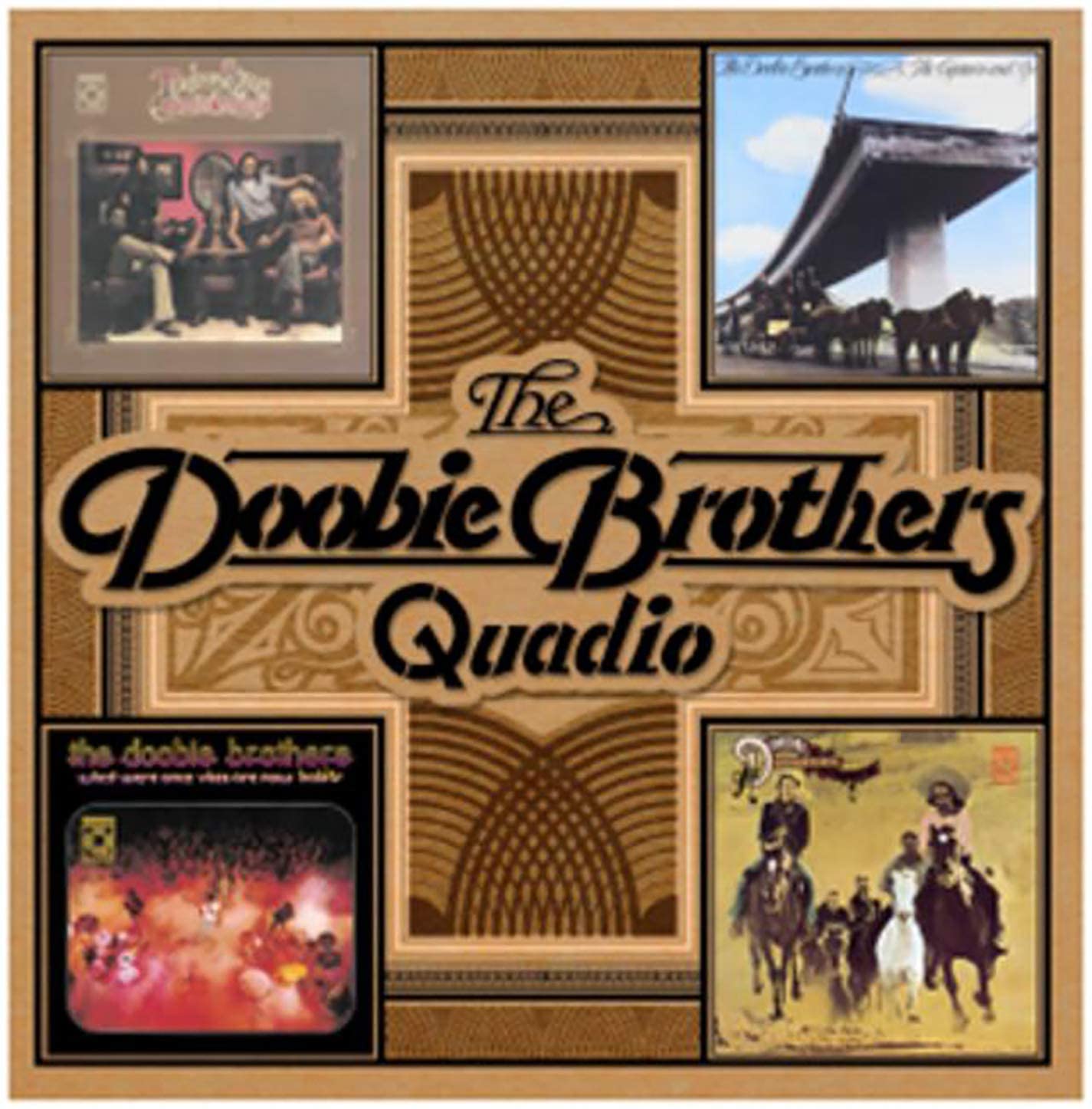
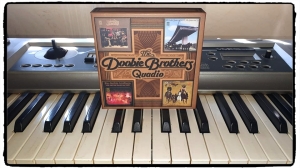

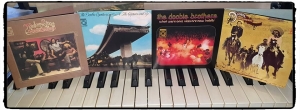



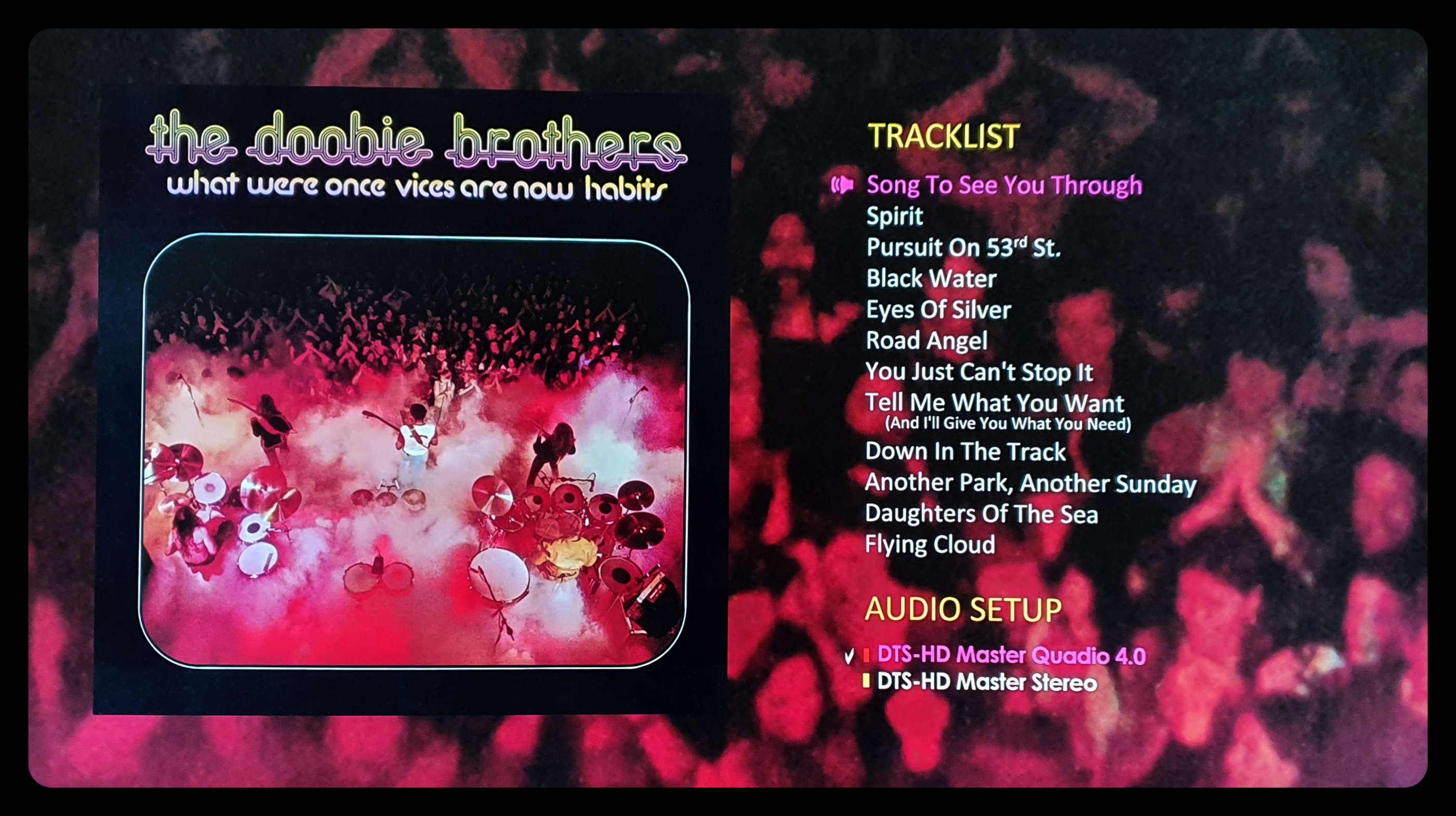
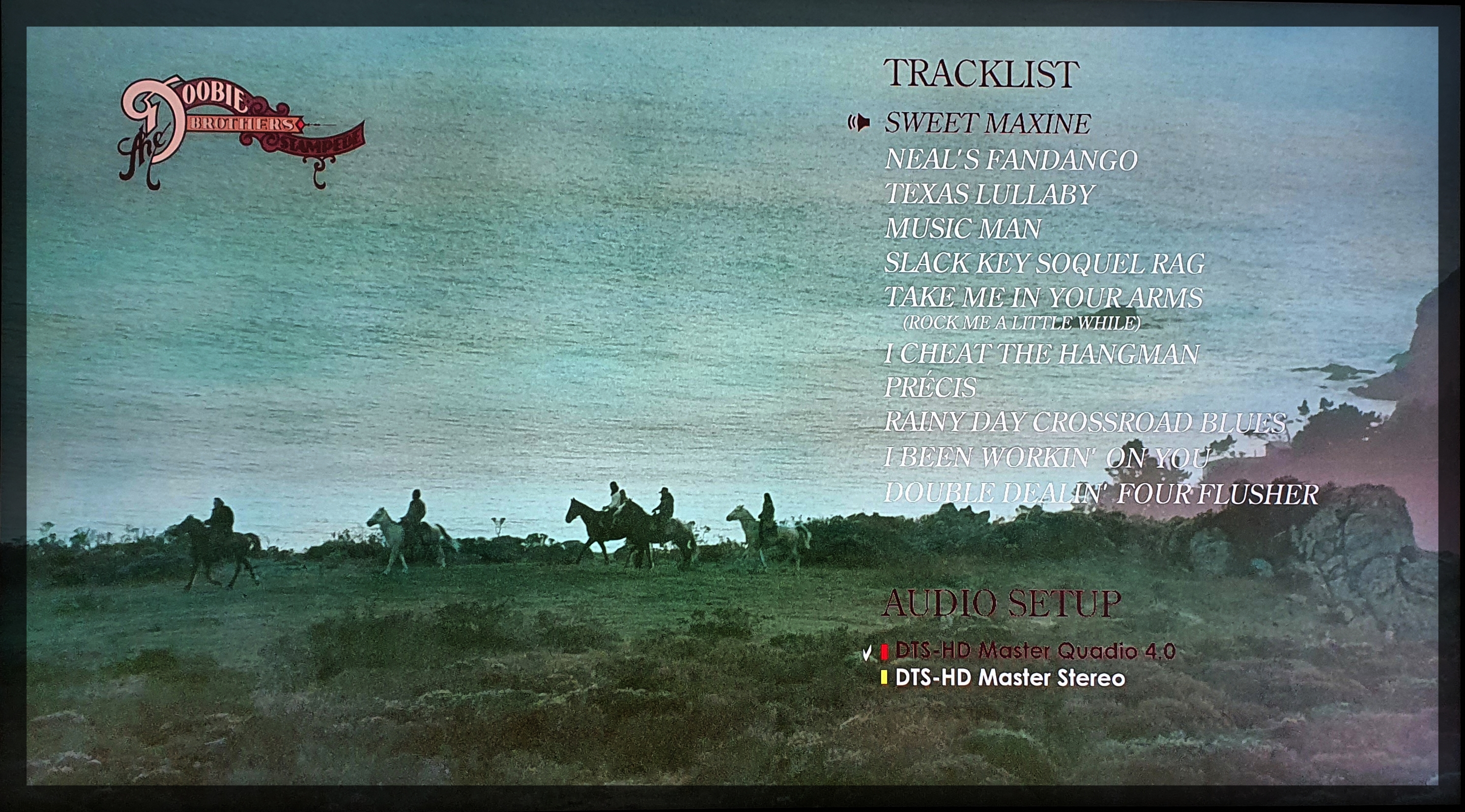
 Toulouse Street
Toulouse Street
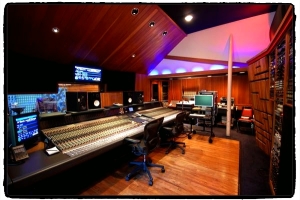
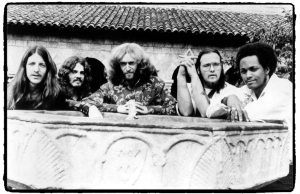
 The Captain and Me
The Captain and Me



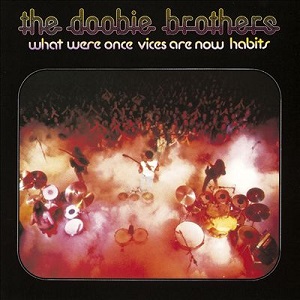 What Were Once Vices Are Now Habits
What Were Once Vices Are Now Habits

 Stampede
Stampede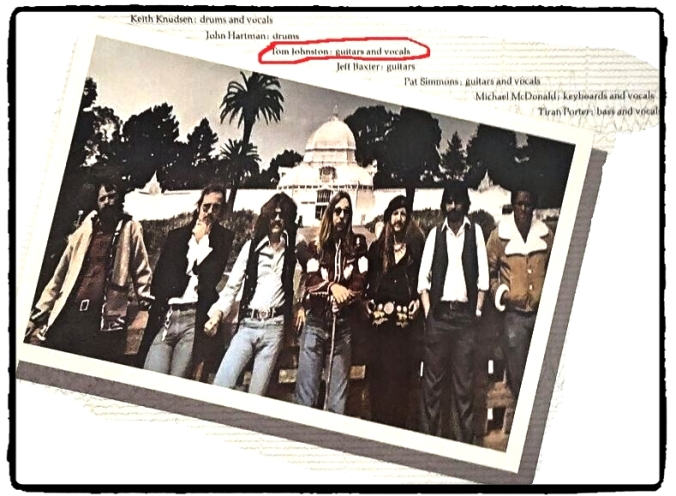

 Rhino’s Quadio series started back in 2016 when they released the Chicago mammoth boxset that had 9 Blu-rays. I do believe they reissued this box set again in 2022 but don’t quote me on that. However, like this boxset, it is now out of print and I have no idea if this Doobie Brothers boxset will get reissued. It is however well worth seeking out provided you can pick it up for a good price. I saw it on Amazon UK around 6 months after I had bought it in 2021 going for £27 brand new, it had to be the bargain of the year. More recently I have noticed it on the Dig! Store going for £48.74 which is an excellent price considering that most are now charging up to £100 for it.
Rhino’s Quadio series started back in 2016 when they released the Chicago mammoth boxset that had 9 Blu-rays. I do believe they reissued this box set again in 2022 but don’t quote me on that. However, like this boxset, it is now out of print and I have no idea if this Doobie Brothers boxset will get reissued. It is however well worth seeking out provided you can pick it up for a good price. I saw it on Amazon UK around 6 months after I had bought it in 2021 going for £27 brand new, it had to be the bargain of the year. More recently I have noticed it on the Dig! Store going for £48.74 which is an excellent price considering that most are now charging up to £100 for it. This year in 2023 Rhino continued their Quadio Blu-ray series and instead of boxsets of one band or artist, they are picking certain albums from various artists and releasing them in bundles of four and individually. The bundle idea is that you can save yourself a few quid in comparison to buying each one individually. The first batch of four to be released was Alice Cooper’s Billion Dollar Babies, Paranoid by Black Sabbath, Nightingales & Other Tales From The Vinyl Jungle by The J. Geils Band and Jefferson Starship’s Red Octopus.
This year in 2023 Rhino continued their Quadio Blu-ray series and instead of boxsets of one band or artist, they are picking certain albums from various artists and releasing them in bundles of four and individually. The bundle idea is that you can save yourself a few quid in comparison to buying each one individually. The first batch of four to be released was Alice Cooper’s Billion Dollar Babies, Paranoid by Black Sabbath, Nightingales & Other Tales From The Vinyl Jungle by The J. Geils Band and Jefferson Starship’s Red Octopus. The second bundle they put out a couple of months ago was even more of a mixed bag with Holiday by America, Mingus Moves by Charles Mingus, Gordon Lightfoot’s Sundown and Spinners by The Spinners. It does appear that Rhino is following Dutton Vocalion’s footsteps with this niche end of the market and it’s great to see these old Quad mixes being brought back to the fore in this present day. Rhino plans to release its 3rd bundle of four in February 2024 though no details of the titles have been announced as of yet. The future however does look bright for us surround enthusiasts and I take my hat off to these companies who continue to support this niche end of the market and long may it continue.
The second bundle they put out a couple of months ago was even more of a mixed bag with Holiday by America, Mingus Moves by Charles Mingus, Gordon Lightfoot’s Sundown and Spinners by The Spinners. It does appear that Rhino is following Dutton Vocalion’s footsteps with this niche end of the market and it’s great to see these old Quad mixes being brought back to the fore in this present day. Rhino plans to release its 3rd bundle of four in February 2024 though no details of the titles have been announced as of yet. The future however does look bright for us surround enthusiasts and I take my hat off to these companies who continue to support this niche end of the market and long may it continue.